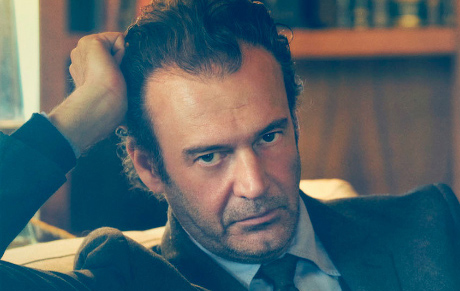DAL CINEMA ALLA MODA. E VICEVERSA?
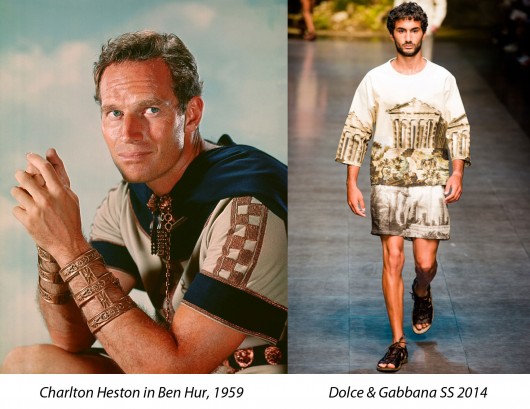 E’ senza dubbio intenso, ma forse non equamente biunivoco, il rapporto tra moda e cinema. Se è vero che quest’ultimo fornisce sin dalla sua nascita modelli di eleganza al maschile in grande profusione, non è altrettanto facile che la settima arte attinga con immediatezza al vestire della realtà per trasporlo poi con successo sotto i riflettori. Per una ragione ben precisa: sul set occorrono sempre costumi, non abiti, al di là di quella che può essere l’ambientazione storica del film. Costumi che si prestino a rendere un determinato effetto scenico, quasi mai intrinseco al capo “normale” di abbigliamento. Il discorso è generale e comporta le dovute, riuscitissime eccezioni, tra le quali è doveroso ricordare “Gli Intoccabili” di Brian de Palma, così come “A Single Man” di Tom Ford. Ma non dimentichiamo che si sta parlando dello straordinario talento di Giorgio Armani e del designer texano.
E’ senza dubbio intenso, ma forse non equamente biunivoco, il rapporto tra moda e cinema. Se è vero che quest’ultimo fornisce sin dalla sua nascita modelli di eleganza al maschile in grande profusione, non è altrettanto facile che la settima arte attinga con immediatezza al vestire della realtà per trasporlo poi con successo sotto i riflettori. Per una ragione ben precisa: sul set occorrono sempre costumi, non abiti, al di là di quella che può essere l’ambientazione storica del film. Costumi che si prestino a rendere un determinato effetto scenico, quasi mai intrinseco al capo “normale” di abbigliamento. Il discorso è generale e comporta le dovute, riuscitissime eccezioni, tra le quali è doveroso ricordare “Gli Intoccabili” di Brian de Palma, così come “A Single Man” di Tom Ford. Ma non dimentichiamo che si sta parlando dello straordinario talento di Giorgio Armani e del designer texano.
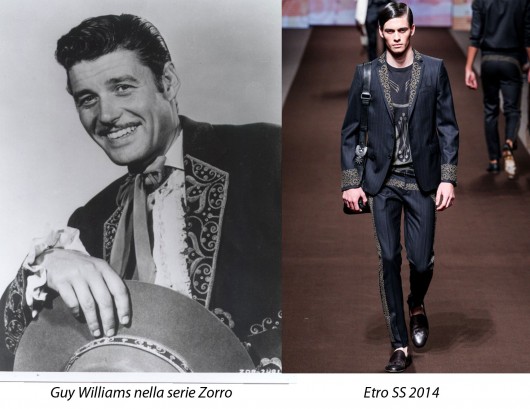 In direzione opposta, il principio appare totalmente differente. Ferme restando alcune imprescindibili figure di riferimento – Edoardo VII, il Duca di Windsor, John Fitzgerald Kennedy, Gianni Agnelli e pochi altri “grandi” – dall’inizio del ventesimo secolo il cinema costituisce il serbatoio più prolifico e certamente meglio scandagliato per quanto riguarda le icone dello stile Uomo del nostro tempo. Non va escluso il piccolo schermo: è sufficiente pensare a “Mad Men” oppure alla recentissima “Hannibal” con lo strepitoso Mads Mikkelsen, entrambe serie cult per i contenuti, indubbiamente, ma forse ancor più per l’immagine.
In direzione opposta, il principio appare totalmente differente. Ferme restando alcune imprescindibili figure di riferimento – Edoardo VII, il Duca di Windsor, John Fitzgerald Kennedy, Gianni Agnelli e pochi altri “grandi” – dall’inizio del ventesimo secolo il cinema costituisce il serbatoio più prolifico e certamente meglio scandagliato per quanto riguarda le icone dello stile Uomo del nostro tempo. Non va escluso il piccolo schermo: è sufficiente pensare a “Mad Men” oppure alla recentissima “Hannibal” con lo strepitoso Mads Mikkelsen, entrambe serie cult per i contenuti, indubbiamente, ma forse ancor più per l’immagine.
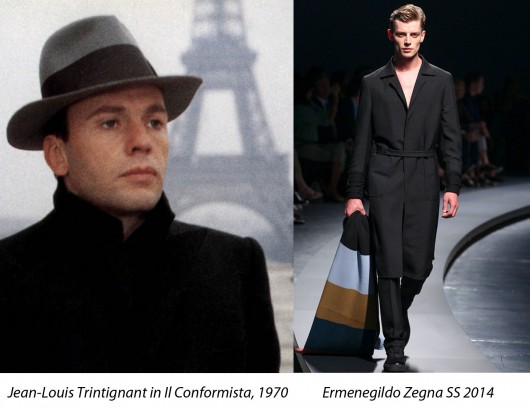 Ai look dei protagonisti del cosiddetto “sogno collettivo” si richiama l’abbigliamento maschile di oggi, quello che sfila in passerella esattamente come quello che si vede per le strade. Semplificando al massimo, si può ragionare per tipologie di personaggi, per “characters”, come direbbero gli Anglosassoni. Il dandy, per esempio, con tanto di sotto-filone dandy/canaglia: chi non ha mai sognato di far proprio l’aplomb di Cary Grant, David Niven, Dirk Bogarde, William Powell, James Stewart, Leslie Howard, Douglas Fairbanks Jr., Clark Gable, Rock Hudson? Per pochi nomi che si possono menzionare, centinaia di altri finiscono per essere omessi. Senza scordare le varianti “nazionali”: da Vittorio De Sica – perfetto anche nelle più che mediocri produzioni dell’epoca dei “telefoni bianchi” – a Carlos Gardel – impeccabile in gessato e Borsalino nelle “peliculas tangueras” degli anni ’30 e ’40. E chi non ha mai guardato al bel tenebroso? Humphrey Bogart in “Casablanca” o ne “Il Falcone Maltese”, Joseph Cotten ne “Il Terzo Uomo”, Robert Mitchum in “Marlowe”.
Ai look dei protagonisti del cosiddetto “sogno collettivo” si richiama l’abbigliamento maschile di oggi, quello che sfila in passerella esattamente come quello che si vede per le strade. Semplificando al massimo, si può ragionare per tipologie di personaggi, per “characters”, come direbbero gli Anglosassoni. Il dandy, per esempio, con tanto di sotto-filone dandy/canaglia: chi non ha mai sognato di far proprio l’aplomb di Cary Grant, David Niven, Dirk Bogarde, William Powell, James Stewart, Leslie Howard, Douglas Fairbanks Jr., Clark Gable, Rock Hudson? Per pochi nomi che si possono menzionare, centinaia di altri finiscono per essere omessi. Senza scordare le varianti “nazionali”: da Vittorio De Sica – perfetto anche nelle più che mediocri produzioni dell’epoca dei “telefoni bianchi” – a Carlos Gardel – impeccabile in gessato e Borsalino nelle “peliculas tangueras” degli anni ’30 e ’40. E chi non ha mai guardato al bel tenebroso? Humphrey Bogart in “Casablanca” o ne “Il Falcone Maltese”, Joseph Cotten ne “Il Terzo Uomo”, Robert Mitchum in “Marlowe”.
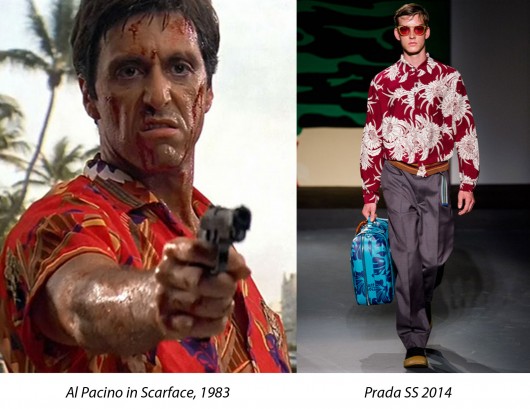 E così via, di genere in genere. Dai giovani ribelli – James Dean, Montgomery Clift, Jean Paul Belmondo, Laurent Terzieff, Horst Buchholz – agli “eroi del popolo” – Jean Gabin in “Alba Tragica”, Massimo Girotti in “Ossessione”, Henry Fonda in “Furore”. Dagli esotisismi di Rodolfo Valentino ne “Il Figlio dello Sceicco” o di Gary Cooper in “Marocco” al fascino dell’uniforme di Harvey Keitel e Keith Carradine ne “I Duellanti”, di Farley Granger in “Senso”, degli innumerevoli conti Vronskij nelle altrettanto innumerevoli versioni di “Anna Karenina”. Tanti filoni cinematografici e televisivi, altrettanti modelli di riferimento a cui ispirarsi. I romantici, idealisti, esistenzialisti di “Jules et Jim” di Truffaut. I guerrieri invitti come Charlton Heston in “Ben Hur”, Russell Crowe ne “Il Gladiatore”, Bekim Fehmiu nella “Odissea”, eccellente sceneggiato RAI del 1968. Vogliamo trascurare il mix caraibico, sempre più che appealing, di sole, colore, mare e vita turbolenta? Da Al Pacino in “Scarface” a Don Johnson in “Miami Vice”, quest’ultimo da ricordarsi più per l’avvenenza, per le giacche a spalla squadrata con le maniche rimboccate e le camicie e/o T-shirt sgargianti che non per il talento interpretativo… Giorgio Re
E così via, di genere in genere. Dai giovani ribelli – James Dean, Montgomery Clift, Jean Paul Belmondo, Laurent Terzieff, Horst Buchholz – agli “eroi del popolo” – Jean Gabin in “Alba Tragica”, Massimo Girotti in “Ossessione”, Henry Fonda in “Furore”. Dagli esotisismi di Rodolfo Valentino ne “Il Figlio dello Sceicco” o di Gary Cooper in “Marocco” al fascino dell’uniforme di Harvey Keitel e Keith Carradine ne “I Duellanti”, di Farley Granger in “Senso”, degli innumerevoli conti Vronskij nelle altrettanto innumerevoli versioni di “Anna Karenina”. Tanti filoni cinematografici e televisivi, altrettanti modelli di riferimento a cui ispirarsi. I romantici, idealisti, esistenzialisti di “Jules et Jim” di Truffaut. I guerrieri invitti come Charlton Heston in “Ben Hur”, Russell Crowe ne “Il Gladiatore”, Bekim Fehmiu nella “Odissea”, eccellente sceneggiato RAI del 1968. Vogliamo trascurare il mix caraibico, sempre più che appealing, di sole, colore, mare e vita turbolenta? Da Al Pacino in “Scarface” a Don Johnson in “Miami Vice”, quest’ultimo da ricordarsi più per l’avvenenza, per le giacche a spalla squadrata con le maniche rimboccate e le camicie e/o T-shirt sgargianti che non per il talento interpretativo… Giorgio Re
From cinema to fashion. And vice-versa? The link between fashion and cinema is doubtless intense, but maybe not equitably one-to-one. If it’s true that cinema shows, since its birth, models of elegance in profusion, it’s not so expected that the seventh art would draw directly on real clothing to transpose it successfully. For a specific reason: on set there’s need of costumes, not clothes, regardless of the movie’s historical setting. Costumes that render a specific scenic effect, hardly ever intrinsic of a “normal” garment. This is a generic assertion and involves the due and successful exceptions, for example “The Untouchables” by Brian De Palma and “A Sigle Man” by Tom Ford. But don’t forget that we’re talking about the genius of Giorgio Armani and the Texan designer. In the opposite direction, the principle is totally different. Apart from some essential reference models – Edward VII, the Duke of Windsor, John Fitzgerald Kennedy, Gianni Agnelli, and a few others “big”- from the beginning of the 20th Century cinema represents the most productive and plumbed source of style icons of our time. The small screen hasn’t to be excluded: think about “Mad men” or the most recent “Hannibal” with the amazing Mads Mikkelsen, both cult series for their contents, but maybe more for their image. Today’s menswear, that we see both on catwalks and in the streets, refers to the look of the protagonists of the “collective dream”. To oversimplify, we can reason about characters’ categories. The dandy, for example, with the subcategory dandy/swindler: who did not dream about having the aplomb of Cary Grant, David Niven, Dirk Bogarde, William Powell, James Stewart, Leslie Howard, Douglas Fairbanks Jr., Clark Gable, Rock Hudson? Without forgetting the “national” variations: from Vittorio De Sica – perfect even in that lousy productions of the “white telephones” era – to Carlos Gardel – flawless in a pinstriped suit and Borsalino in the “peliculas tangueras” of the 30s and 40s. And who did not look up to the brooding hunk? Humphrey Bogart in “Casablanca” or in “The Maltese Falcon”, Joseph Cotten in “The Third Man”, Robert Mitchum in “Marlowe”. And so on, category by category. From the young rebels – James Dean, Montgomery Clift, Jean Paul Belmondo, Laurent Terzieff, Horst Buchholz –to the “people’s heroes” – Jean Gabin in “Le jour se lève”, Massimo Girotti in “Ossessione”, Henry Fonda in “The Grapes of Wrath”. From the exoticism of Rodolfo Valentino in “The Son of the Sheik” or of Gary Cooper in “Morocco” to the uniform’s appeal of Harvey Keitel and Keith Carradine in “The Duellists”, of Farley Granger in “Senso”, of the innumerable Count Vronskij in the as many adaptations of “Anna Karenina”. Many cinema and TV genres, as many reference models. The romantics, idealists, existentialists of “Jules et Jim” by Truffaut.The unbeaten warriors like Charlton Heston in “Ben Hur”, Russell Crowe in “The Gladiator”, Bekim Fehmiu in “Odissea”, excellent RAI miniseries of 1968. Can we exclude the caribbean mix, always more than appealing, of sun, colours, sea and troubled life? From Al Pacino in “Scarface” to Don Johnson in “Miami Vice”, this last one to remeber more for his beauty, for the square-shoulder jackets with turned-up sleeves and the bright shirts/T-shirts, than for his performance… Giorgio Re





